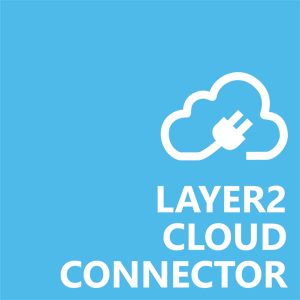Keep your SharePoint in sync. Download and try it today.





Microsoft Dynamics NAV Data Integration with Office 365 and 150+ others
Microsoft Dynamics NAV (on-premises or Online) data can be integrated and synchronized codeless with Office 365, SharePoint and 150+ other data sources using the Layer2 Cloud Connector via the Layer2 Data Provider for OData. Please take a look here for a selection of supported systems and applications.

To connect and sync Microsoft Dynamics NAV 2013 and 2015 data entities, the data source must be configured as follows in the Layer2 Cloud Connector Connection Manager:

Fig. Example connection configuration to connect to Microsoft Dynamics NAV data via OData.
Microsoft Dynamics NAV Specific Settings
Please note the following specific settings.
- Select the OData Data Provider to connect. The provider is part of the Layer2 Cloud Connector ADO.NET provider package and should be already installed. You will find an OData Provider specification here.
- You can use a connection string like this to
connect:
url=http://myNAVServer:7048/DynamicsNAV80/OData/; Collection=Customers; Authentication=Windows; User=domain\username; Password=myPassword - Several different authentication methods are generally supported. See provider specification linked above for more.
- You can make use of OData to query your data as supported by the data provider and source system. For more information about supported queries, see Microsoft Dynamics NAV OData specification.
- You can map your data fields to specific external fields in the Layer2 Cloud Connector. Please take care about data types (simple type conversions are supported).
- Please enter an appropriate primary key (column with unique values), depending on query (use the data preview to find an appropriate field for this).
- You can use the connection for uni- or bi-directional synchronization. In case of inserts (full CRUD) via external systems, please take care of the primary key.
- Note that NAV 2013 supports read-only. NAV 2013 R2 and NAV 2015 supports both read and write functionality.
- No installation or changes are required at the Dynamics CRM data source or data destination.
- It may be required that a simple web service be published through the NAV Administration tool to expose the data you want in the OData service. See the Dynamics NAV OData specification for more information.
- Data synchronization can be started manually in the Connection Manager, per command line or scheduled in background by the Layer2 Cloud Connector Windows Service. Only data changes are processed (no delete / bulk import).
- No programming required for setup a connection and sync.
- No need to open your local network for access from outside.
Step-by-Step Intros for Dynamics NAV Data Integration and Synchronization
Just some ideas what to connect next:
- Sync Microsoft Dynamics NAV (on-premises or online) via OData with SharePoint or Office 365.
- Sync with SQL Server or SQL Azure for improved reporting via SSRS.
- Sync with Microsoft Exchange (on-premises or online) for notifications, contacts, tasks, calendar events, mobile access and offline availability on any device.
- Sync with 3rd party tools based on SQL databases like Oracle, mySQL or Microsoft SQL Server.
Can't find what you are looking for? Take a look here for supported systems or contact [email protected] for help.
READY TO GO NEXT STEPS?
Questions? Contact us.
We are here to help. Contact us and our consulting will be happy to answer your questions.